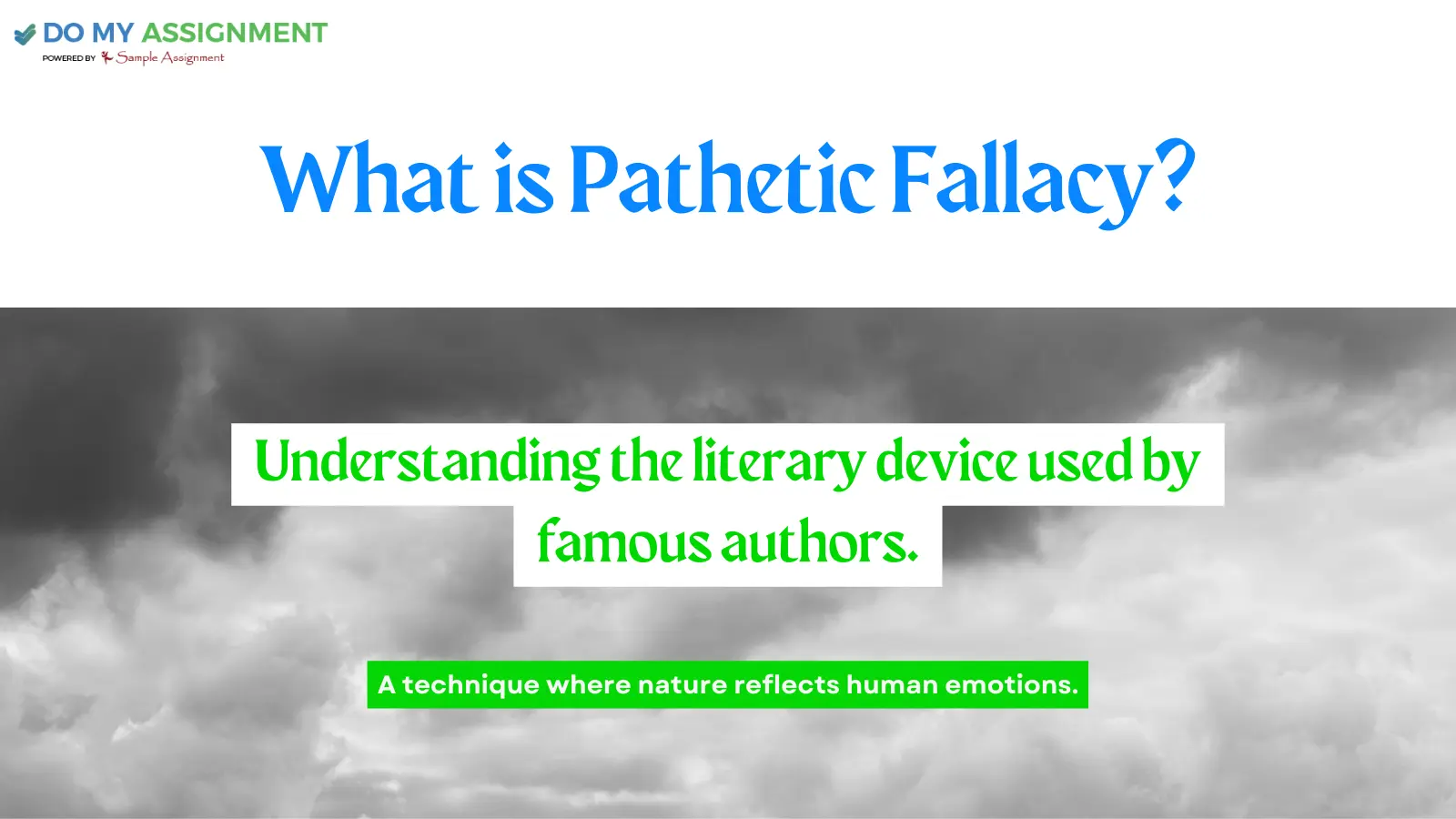Literary Devices You Need to Know While Pursuing Your Higher Education

Highlights
In addition to reading literature, university students experiment with literary devices to effectively express their views. These techniques are extremely beneficial to understand, whether you're trying to get better at writing an assignment or preparing for an assessment.
However, there are dozens of such devices, which can make their understanding and usage quite complicated!
What is a Literary Device?
Literary devices are strategies employed by authors to elucidate ideas to their audience. A writer's expert use of literary techniques lets readers understand more than just what the words on each page signify. The plot, topic, and setting are the only literary components writers must use to express meaning; however, this would not result in the most engaging poems or stories.
That's the purpose of literary devices - they are comparable to the cheese, dressing, and croutons that provide flavor to a salad. They instill poetry and drama to the reading, which enables readers to relate to the work on a more personal and profound level.
How using Literary Devices helps students:
The use of these techniques in higher education equips students for both academic and personal success. Using such techniques also enhances students' cognitive, creative, and interpersonal skills.
Students can better comprehend how writing communicates meaning due to literary words. Writers also employ literary devices as a means of adding interest to their writing.
You can use critical learning skills like compositional writing, literary analysis, and public speaking more effectively if you are proficient in literary words and strategies.
Test coming up? We’ll help you understand literary devices with ease — check out our Assessment Help service.
Most Common Types of Literary Devices
As the fundamental component of creative writing, literary devices give literary works more nuance, depth, and reader involvement. The most popular and significant categories of literary devices are examined in this section to help you create exceptional academic writing tasks.
Now, let's get going!
1. Allegory
Allegories are stories that convey a deeper meaning, and thus, reflect something else, such as a noteworthy historical event or ideology. Sometimes, the storylines are entirely made up and have a passing connection to the original work. At other times, the characters serve as fictitious representations of historical personalities from real life.
Example: "Lord of the Flies" by William Golding - One interpretation of the narrative is that it is an allegory of human nature's inherent evil.
2. Simile
Similes, sometimes also called indirect analogies, are constructed similarly to metaphors but convey a distinct idea. Two unrelated objects are being compared to each other, much like in metaphors. The analogy, in contrast to a metaphor, depends on the terms "like" or "as." By adding richness and nuance to language, similes enable readers to picture and comprehend the attributes and traits being discussed.
Example: The children's excitement was like a volcano, ready to erupt.
Such literary devices are quite difficult to use while writing assignments, and as a consequence, students fail to submit good-quality assignments. With our assignment help online, you can boost your academic grades. Also, you can submit your work on time before the deadline.
3. Symbolism
Many of the concepts conveyed through metaphor and imagery are combined in symbolism. A symbol is essentially an object used to represent a notion; it's similar to a metaphor, but much shorter!
The English language is full of symbols, and we frequently employ these well-known literary methods in speech and design without even realising! Here are some typical instances of symbolism:
- The watchful eyes of the old portrait seem to symbolize the past's ever-present influence on the present.
- The color red in the painting symbolizes passion and intense emotion.
4. Personification
Personification is endowing inanimate objects with human characteristics. It is also referred to as anthropomorphism, and is a potent technique for encouraging empathy in your audience.
- Consider personification as a distinct kind of imagery. A nonhuman thing can be described by applying human descriptions to it using the five senses. It is possible to attribute mental phenomena such as thoughts and emotions to nonliving or nonhuman entities. Example:
- The river sang a soothing lullaby.
- The river is given human qualities by singing a lullaby.
- The moon watched over the sleeping town.
- The moon is described as watching, a human action, to convey a sense of protection.
5. Hyperbole
Do you have a friend that tends to overly dramaticize things? It's likely that they are using exaggeration. "Hyperbole" simply means "over-dramatic.”
Hyperbole is any kind of exaggerated statement or depiction. In the English language, hyperbole is frequently used. You've definitely heard someone say things like this:
- Example: I've told you a million times.
This statement exaggerates the frequency of the action to emphasize frustration or annoyance.
- He's as quick as lightning.
This hyperbole emphasizes how fast someone is by comparing them to lightning speed.
6. Paradox
A paradox is the contradictory thoughts placed side by side that, although may seem impossible, they show a deeper reality. Paradoxes are one of the more difficult literary devices, but they can be effective in breaking down stereotypes and making the reader rethink their assumptions.
Example: The beginning of the end.
This paradox implies that something is simultaneously starting and concluding, suggesting a transitional phase.
- You have to be cruel to be kind.
- This paradox suggests that sometimes tough love or stern actions can ultimately be in a person's best interest.
7. Metaphor
Metaphors, like analogies, are figures of speech that emphasize similarities between two dissimilar items by drawing comparisons between them.
A writer can fit several details and images into a single, concise statement by using metaphors. A plain description lacks the weight and worth that a metaphor does. The reader won't fully appreciate the significance of the tree's size and scope if the author chooses to refer to it as “the huge, spiritual core of the forest.”
Example: The classroom was a zoo.
This metaphor compares the chaotic and noisy classroom to a zoo, emphasizing disorder.
- His heart is a cold, dark cave.
This metaphor portrays his emotions as being like a cold, dark cave, suggesting a lack of warmth or light.
Do you want to explore more about powerful literary device? To learn how to use metaphors effectively in your own writing, see our detailed blog post on Metaphors - Meaning, Types, and Examples.
8. Imagery
Fiction writers use imagery to draw readers in. You are sent to a new place or a dystopian civilization within the book's pages. Examples of imagery are the sensory phrases the author employs to evoke that mental picture in your mind.
Example: The athlete's muscles tensed as he sprinted down the track, propelling himself forward with incredible force.
9. Onomatopoeia
The fancy literary device onomatopoeia describes words that sound like noises and have comparable pronunciations.
Example: The buzzing of the bees filled the warm, sunny afternoon.
In this sentence, the word "buzzing" imitates the sound that bees make, creating an auditory image for the reader.
Don't worry if you still don't understand onomatopoeia; our blog post on the topic what is onomatopoeia in simple terms with examples from everyday life.
10. Satire
Satire is a literary genre that exposes the flaws in human nature or society by means of parody and exaggeration.
Example: New 'Silent Disco' Headphones Let You Dance Alone in Public
This satirical headline humorously highlights the paradox of "silent disco" headphones that enable people to dance to music in public spaces, while appearing utterly absurd as they groove in silence. The satire lies in the absurdity of dancing alone in public with headphones designed for social activity.

| Summary Table of Common Literary Devices |
| Literary Device | Definition | Example |
| Allegory | Story that represents a deeper meaning |
‘Lord of the Flies’ as human nature |
| Simile | Creating comparison using words like ‘as’ and ‘like’ |
‘Excitement was like a volcano’ |
| Symbolism | Using an object to represent an idea |
Red rose=love |
| Personification | Giving human traits to non-human traits |
‘The river sang a lullaby’ |
| Hyperbole | Using exaggerated words for greater effect |
‘I’ve told you a million times’ |
| Paradox | Contradictory statements that reveal the truth |
‘You have to be cruel to be kind’ |
| Metaphor | Direct comparison without using words such as ‘like’ or ‘as’ |
‘The classroom was a zoo’ |
| Imagery | Sensory descriptions used to invoke images |
‘Muscles tensed as he sprinted’ |
| Onomatopoeia | Using words that imitate sounds |
‘Buzzing bees’ |
| Satire | Using humor/parody to criticize | ‘Silent Disco headphones’ headline |
Conclusion
In conclusion, anyone pursuing a degree in literature, creative writing, or any other subject requiring critical thinking and clear communication has to have a solid understanding of literary devices. These tools act as the keys to unlocking the complex levels of meaning contained in literary works, enabling students to accurately express their own ideas and recognize the authors' skills.
It is clear from our exploration of various literary devices, such as metaphor, simile, imagery, and more. These are essential components of expression rather than merely decorative tactics. Moreover, they enhance our comprehension of stories, provide opportunities for imaginative investigation, and enable us to convey intricate concepts proficiently.
At times, understanding literary devices becomes difficult for students, and they cannot apply these techniques in academic writing tasks. As a result, they couldn’t attain the desired results. If you are also facing similar problems with your work and search for ‘pay to do my assignment’, then consider us for assignment assistance services.
Nick Johnson
Nick is a multi-faceted individual with diverse interests. I love teaching young students through coaching or writing who always gathered praise for a sharp calculative mind. I own a positive outlook towards life and also give motivational speeches for young kids and college students.








